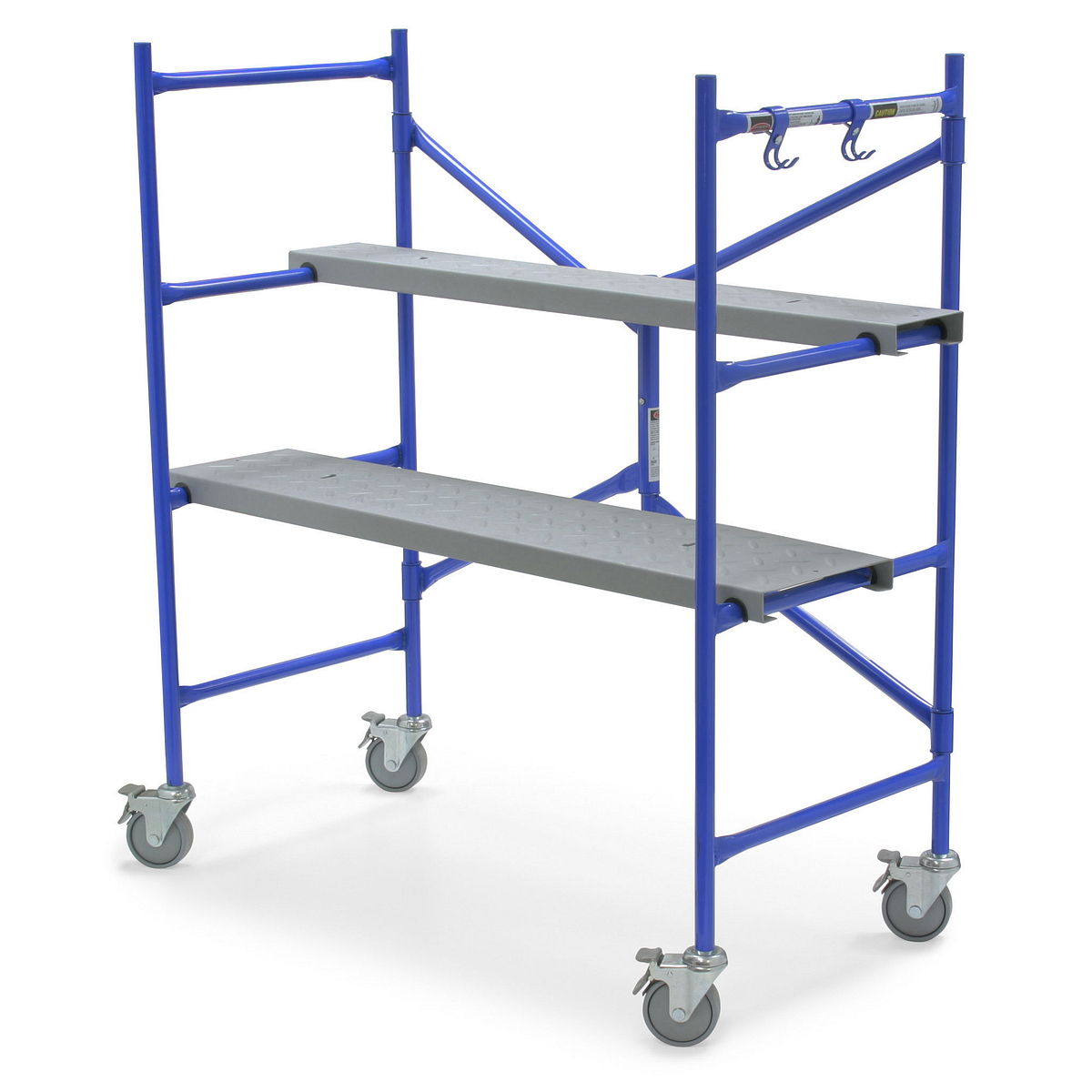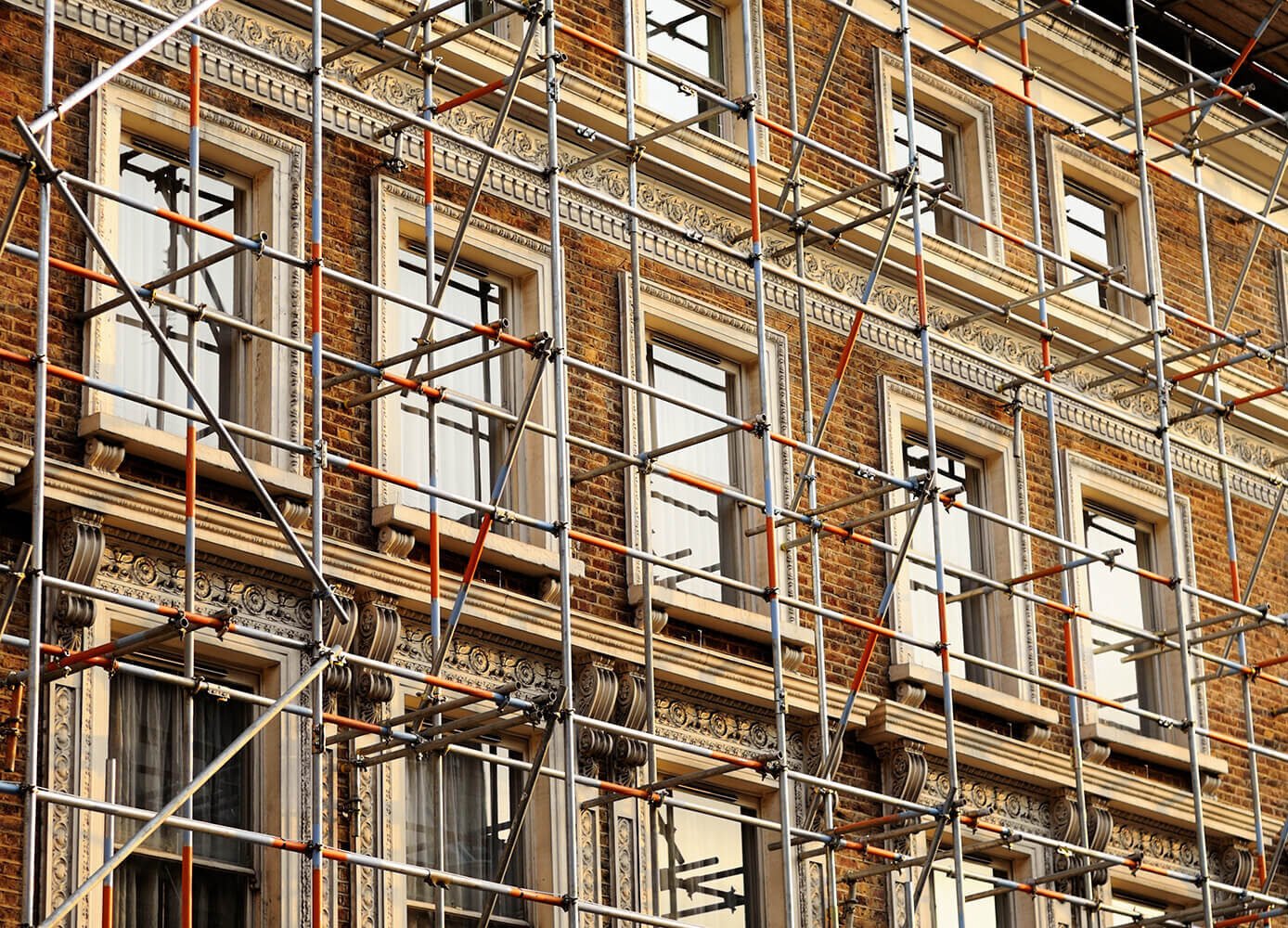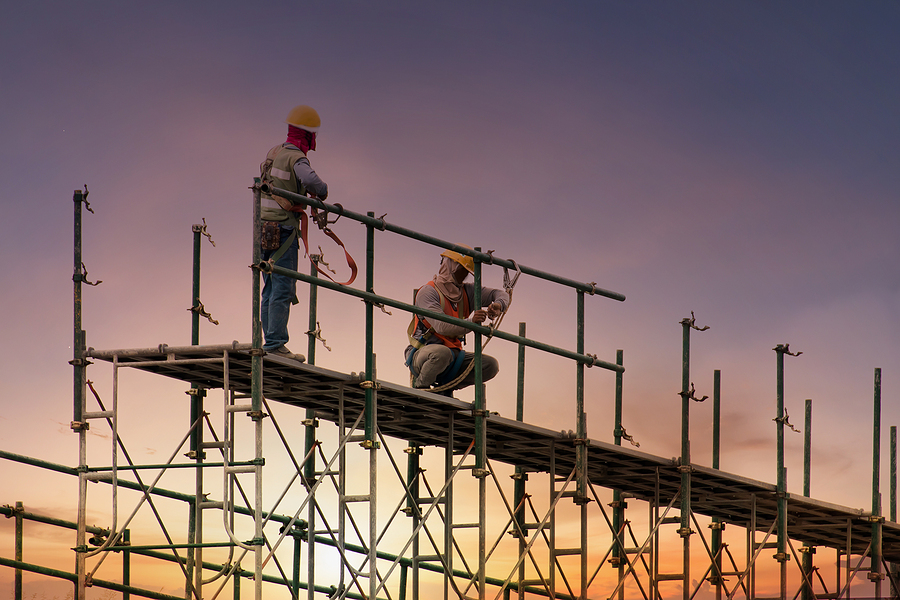Temporary Roof Scaffolding Experts Providing Secure and Reliable Installations
Temporary Roof Scaffolding Experts Providing Secure and Reliable Installations
Blog Article
Exploring the Different Kinds Of Scaffolding Utilized in Building Jobs
The building and construction market depends greatly on numerous types of scaffolding to meet certain project needs, each offering unique benefits and applications. Conventional structure scaffolding gives a strong foundation for general jobs, while put on hold scaffolding is vital for work with high-rise frameworks. Various other choices, such as system and rolling scaffolding, accommodate efficiency and movement, respectively. The cantilever alternative confirms indispensable in city environments where room is constrained. Understanding the subtleties of these scaffolding kinds is vital for enhancing security and performance on construction sites, motivating a better exam of their one-of-a-kind characteristics and applications.

Traditional Structure Scaffolding
Traditional structure scaffolding is just one of one of the most extensively utilized methods in the building and construction industry as a result of its effectiveness and convenience. This system is composed of upright and horizontal frameworks that are assembled to produce a steady system for materials and employees. The main components include vertical messages, straight ledgers, and angled dental braces, which with each other give a strong structure that can sustain significant lots.
One of the crucial benefits of typical frame scaffolding is its versatility to numerous building and construction projects, ranging from domestic buildings to large business frameworks. The modular style permits very easy setting up and disassembly, making it efficient for both long-term and temporary tasks. In addition, the system can be customized in elevation and size, suiting various building styles and site conditions.
Safety is critical in scaffolding applications, and standard structure systems are equipped with guardrails and toe boards to avoid falls and make certain employee defense. Moreover, routine evaluations and adherence to safety laws are important in preserving the honesty of the scaffold. On the whole, conventional structure scaffolding stays a basic selection in the construction sector, providing a dependable platform for labor and improving overall task performance

Suspended Scaffolding
Put on hold scaffolding uses an unique remedy for construction tasks that require access to elevated surfaces, especially in scenarios where typical frame scaffolding may be not practical. This kind of scaffolding is commonly put on hold from the roofing system or top degrees of a framework, making use of a system of ropes, pulleys, and platforms to create a functioning area that can be gotten used to various elevations.
One of the primary benefits of put on hold scaffolding is its adaptability. It can be easily rearranged or reduced to fit adjustments in building and construction demands, making it perfect for jobs such as home window setup, façade work, and upkeep on skyscraper structures. Additionally, the minimal impact of suspended scaffolding permits for far better use of ground area in metropolitan environments, where space is usually minimal.
Safety and security is a critical factor to consider in the use of put on hold scaffolding. On the whole, put on hold scaffolding gives a efficient and reliable remedy for accessing hard-to-reach areas in different building situations, enhancing both productivity and safety on website.
System Scaffolding
System scaffolding, usually pertained to as a contemporary service in the scaffolding sector, is composed of pre-engineered elements that can be swiftly assembled and adapted for different building tasks. Scaffolding. This kind of scaffolding is characterized by its modular style, which enables versatility and performance on task websites, accommodating architectural requirements and various heights
Generally made from high-strength steel or aluminum, system scaffolding offers boosted resilience and stability. The elements include vertical messages, horizontal journals, and angled dental braces, which adjoin safely, making certain a robust framework. The style frequently integrates standard fittings, streamlining assembly and disassembly processes, thereby minimizing labor time and expenses.

Rolling Scaffolding
Moving scaffolding is a functional alternative to standard set scaffolding, developed for movement and ease of use on building websites. This kind of scaffolding contains a platform sustained by frameworks with wheels, allowing workers to easily relocate it as required. The flexibility function considerably boosts productivity, as it reduces downtime connected with disassembling and setting my latest blog post up taken care of scaffolding.
Usually constructed from light-weight materials such as light weight aluminum or steel, rolling scaffolding supplies a sturdy yet portable solution for tasks needing frequent repositioning - Scaffolding. It is particularly beneficial in jobs such as paint, drywall installment, and electric job, where accessibility to numerous elevations and areas is necessary
Safety is critical in rolling scaffolding style, with functions such as locking wheels to avoid unintentional motion when being used, and guardrails to shield employees from drops. Additionally, numerous models are adjustable in elevation, accommodating numerous project demands.
Cantilever Scaffolding

The layout of cantilever scaffolding usually entails using arms or brackets secured to a structure or framework, making it possible for the platform to extend outward securely. Safety and security is extremely important; thus, these scaffolds should be crafted to withstand various tons and ecological problems. Routine inspection and upkeep are important to ensure architectural integrity and employee safety and security.
Cantilever scaffolding is preferred for its adaptability and reliable usage of space, making it a preferred choice in city atmospheres where room restrictions are typical. It helps with much easier accessibility to high altitudes, eventually adding to the total efficiency of building and construction projects. As with all scaffolding kinds, appropriate training and adherence to security criteria are critical for workers making use of cantilever scaffolding.
Final Thought
Traditional framework scaffolding gives security, while suspended scaffolding provides adaptability for elevated tasks. System scaffolding facilitates fast assembly, and rolling scaffolding boosts movement for varying work environments.
Traditional frame scaffolding supplies a tough structure for general jobs, while suspended scaffolding is essential for work on high-rise frameworks.Rolling scaffolding is a versatile choice to traditional fixed scaffolding, developed for flexibility and ease of usage on construction sites. As with all scaffolding kinds, appropriate training and adherence to safety standards are critical for employees making use of cantilever scaffolding.
Traditional framework scaffolding supplies stability, while put on hold scaffolding provides click site adaptability for elevated jobs. System scaffolding this link assists in quick assembly, and rolling scaffolding improves movement for varying job atmospheres.
Report this page